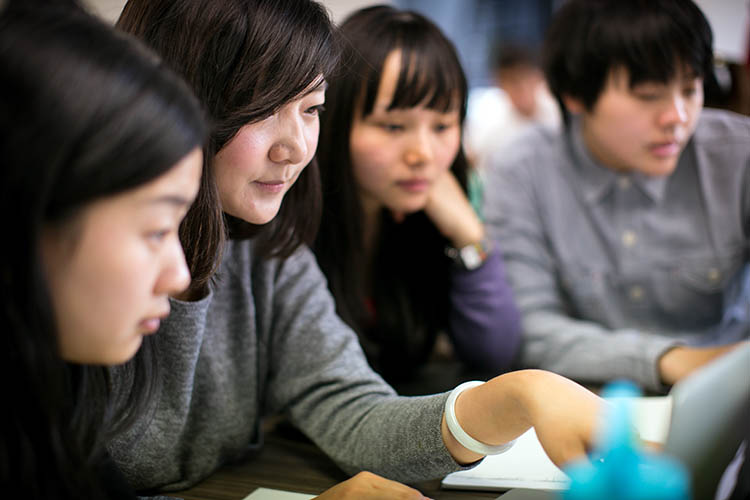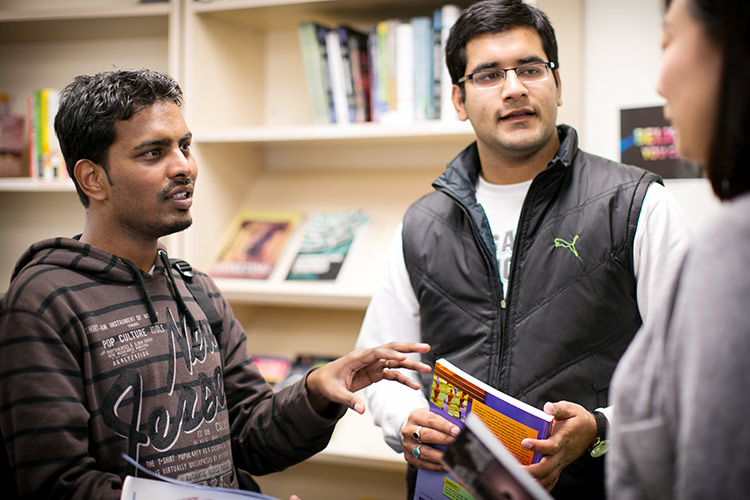Working in groups
During your studies, you might have to work as part of, and sometimes lead, teams. This page will assist you to develop the skills needed to work collaboratively within a group.
How to be successful working in a group
1. Get to know each other
Successfully working in a group starts by getting to know the people in your group.
Structure your first meeting
Create a cohesive unit on first meeting by having a structured approach:

2. Use the group talents
Make the best use of the talents of the members of the group:
-
Discuss each team member’s strengths and contributions
-
Match the strengths and interests of members to the tasks/roles
-
Make sure that everyone has some tasks which carry responsibility so everyone feels included and motivated.
Choose roles for the group
Choose from the following roles to maximise the efficiency of your group:
Organises and facilitates meetings. The facilitator sets the agenda and makes sure everyone’s voice is heard.
Summarises what was discussed in each meeting. The summariser also outlines the next steps for the project after each meeting, including who is responsible for what.
Takes meeting notes. The note taker is responsible for posting the notes somewhere group members can access.
Follows up with group members to ensure that things move forward. The progress chaser is responsible for making sure everyone stays on track.
The time keeper is responsible for making sure everything happens according to the schedule. This includes reminding everyone how much time is left in meetings, as well as the project as a whole, and what’s left to be done.
Presents material that has been created by the group.
Helps resolve conflicts if they arise, making decisions when necessary.
3. Establish ground rules
This involves agreeing on how the group will work together. For example, how will you make sure communication stays respectful? How will you address conflict?
Questions to answer together:
-
How will you make sure that everybody participates equally?
-
What are the rules for dealing with a member who hasn’t been communicating? How frequently should group members communicate/check in?
-
How will you ensure that everybody participates meaningfully? How will you make sure everyone’s contribution is valued?
-
How are decisions made in the group? Do you operate democratically, by the use of roles, or something else?
-
How will you deal with disagreement in the group?
-
How will you deal with problematic interactions, on- and offline?
-
What technologies will support your group meetings?
-
What’s the group’s primary goal? Getting an ‘A’? A good learning experience? The chance to try something new?
4. Set a meeting schedule
Set a meeting schedule and timetable that works for everyone, and members can diary when you are to meet, and when specific tasks are due to be completed.
Within the schedule consider:
- Assignment requirements and due dates
-
What needs to be done face-to-face, as opposed to what can be done on-line. Define how members of the group communicate outside meeting times
- What constitutes satisfactory participation: how much time members have to spend a week, and what happens if deadlines are missed
-
Post the schedule on-line for everyone to view.
By the end of every meeting
Every member should leave meetings feeling:
-
Affirmed, having been listened to individually, with their ideas acknowledged
-
Clear about the goals and expectations of the group
-
Aware of meeting dates and task deadlines
-
Prepared to keep on task and give progress reports as required
-
Supported and willing to support fellow group members
-
Motivated to give their very best for the success of the group
Resolving conflict
Working in groups, from time to time, involves some conflict. Conflict occurs where people have a clash of values, expectations, opinions, interpretations, needs, or wants. Learning to manage conflict effectively is an important skill, and an essential component of your learning when working in groups.
Conflict is:
-
Natural
-
Uncomfortable for most of us
-
A barrier to conversation/dialogue
-
Sometimes necessary, even desirable to achieve a truly collaborative outcome
-
Important to address
What are your ground rules for handling conflict?
It makes sense to consider this question early on in your group process and come up with a few that will work for all of you. Here are some that you may find helpful:

Be open and flexible in looking for solutions to problems.
Ground rules
Attributions
Group process. University of British Columbia. Licensed under Creative Commons Attribution-ShareAlike 4.0 International License.
Hero image: Close up of painting by Fiona Art. Licensed under a Pexels.com license.
Working in groups. University of British Columbia. Retrieved from Licensed under Creative Commons Attribution-ShareAlike 4.0 International License.




